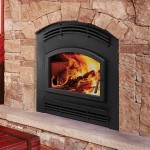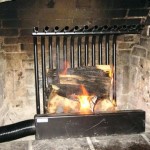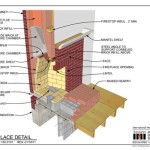Table Ethanol Fireplaces: A Guide to Portable Ambiance
Table ethanol fireplaces offer a versatile and aesthetically pleasing way to introduce the warmth and visual appeal of a fire element into various indoor and outdoor spaces. Unlike traditional wood-burning fireplaces, these units utilize denatured ethanol, a renewable and clean-burning fuel source, eliminating the need for chimneys, vents, or gas lines. The portability and ease of use make them an attractive option for individuals seeking a flexible and convenient fireplace solution.
The fundamental concept behind a table ethanol fireplace revolves around the controlled combustion of liquid ethanol. The fireplace unit typically consists of a fuel reservoir, often referred to as a burner, housed within a decorative enclosure. This enclosure can be constructed from various materials, including glass, stainless steel, concrete, and stone, allowing for diverse aesthetic designs to complement different interior and exterior styles. The burner contains a wick or a ceramic fiber matrix that absorbs the ethanol, facilitating a slow and even release of fuel for combustion. Ignition is typically achieved using a long-handled lighter or a specialized ignition device to safely ignite the vapors emanating from the burner.
The absence of smoke, soot, and ash is a defining characteristic of ethanol fireplaces, contributing to their ease of maintenance. Consequently, regular cleaning primarily involves wiping down the exterior surfaces of the fireplace to remove dust or fingerprints. The burner may require occasional cleaning to remove any residue buildup, ensuring optimal fuel flow and combustion efficiency. Compared to the labor-intensive cleaning associated with traditional fireplaces, ethanol fireplaces present a considerably simpler and more convenient maintenance profile.
Ethanol fuel, also known as denatured alcohol, is a biofuel produced by fermenting plant-based materials such as corn, sugarcane, or cellulose. The denaturing process involves adding a small amount of a bitter-tasting substance to render the ethanol unsuitable for human consumption, thereby exempting it from beverage alcohol taxation. This denatured ethanol burns cleanly, producing primarily carbon dioxide and water vapor as byproducts. While the carbon dioxide released during combustion adds to the overall carbon footprint, the fact that the ethanol is derived from renewable resources partially offsets this impact. It is crucial to source ethanol fuel from reputable suppliers to ensure purity and consistent burning performance.
Understanding the Benefits of Table Ethanol Fireplaces
Table ethanol fireplaces offer a range of advantages that contribute to their growing popularity. One key benefit is their portability. Their compact size and lack of fixed installation requirements allow them to be easily moved from one location to another, providing flexibility in creating ambiance in different rooms or outdoor areas as desired. This portability distinguishes them from traditional fireplaces, which are permanently affixed to a specific location.
Another significant advantage is the ease of installation. Unlike traditional fireplaces that require complex construction and venting systems, table ethanol fireplaces are essentially ready to use out of the box. Simply place the fireplace on a stable, level surface, fill the burner with ethanol fuel, and ignite. This straightforward installation process eliminates the need for professional assistance, saving time and money.
The aesthetic versatility of table ethanol fireplaces is also a compelling factor for many consumers. Available in a wide array of designs, materials, and finishes, these fireplaces can seamlessly integrate into various décor styles, from minimalist modern to rustic traditional. The visual appeal of the dancing flames adds a touch of elegance and sophistication to any space, creating a warm and inviting atmosphere. Furthermore, the flame height and intensity can often be adjusted to suit individual preferences, further enhancing the customization options.
Safety Considerations for Table Ethanol Fireplaces
While table ethanol fireplaces offer convenience and aesthetic appeal, it is paramount to prioritize safety when using them. Ethanol is a flammable liquid, and improper handling can pose a fire hazard. Adhering to safety guidelines and exercising caution is essential to prevent accidents and ensure safe operation.
Always use the fireplace in a well-ventilated area. Although ethanol fireplaces produce minimal emissions compared to traditional fireplaces, adequate ventilation is still necessary to prevent the buildup of carbon dioxide. Opening a window or ensuring proper airflow in the room can help maintain a healthy air quality.
Never refill the burner while the fireplace is lit or still hot. The residual heat can ignite the ethanol vapors, potentially causing a flash fire. Allow the fireplace to cool completely before refilling the burner. Use a funnel to carefully pour the ethanol into the burner, avoiding spills. Any spilled ethanol should be cleaned up immediately with a damp cloth.
Keep flammable materials away from the fireplace. Curtains, furniture, paper, and other combustible items should be positioned at a safe distance from the flames to prevent them from catching fire. Never leave the fireplace unattended while it is burning. Supervise children and pets closely to ensure they do not come into contact with the flames or tamper with the fireplace.
Use only denatured ethanol fuel specifically designed for fireplaces. Other types of alcohol or fuels may not burn cleanly or safely and could potentially damage the fireplace or pose a fire hazard. Store ethanol fuel in a cool, dry place away from heat sources and open flames. Ensure the fuel container is tightly sealed to prevent evaporation and spills.
Consider purchasing a fire extinguisher suitable for flammable liquid fires and keep it readily accessible in case of an emergency. Familiarize yourself with the proper use of the fire extinguisher and know how to activate it quickly and effectively.
Choosing the Right Table Ethanol Fireplace
Selecting the appropriate table ethanol fireplace requires considering several factors to ensure it meets individual needs and preferences. The size of the intended space is a crucial consideration. A larger room will require a larger fireplace with a higher heat output to create a noticeable warming effect. Conversely, a smaller room may only need a smaller fireplace with a lower heat output to provide ambiance without overheating the space.
The design and style of the fireplace should complement the existing décor. Choose a fireplace that matches the overall aesthetic of the room to create a cohesive and visually appealing look. Consider the materials, finishes, and shape of the fireplace to ensure it blends seamlessly with the surrounding furniture and accessories.
The burner capacity and burn time are also important factors to consider. A larger burner capacity will allow for a longer burn time before needing to be refilled. Consider how long you typically want the fireplace to burn and choose a model with an appropriate burner capacity. The burn time can also be affected by the flame height, with higher flames consuming fuel more quickly.
Safety features are paramount. Look for fireplaces that have been tested and certified by reputable safety organizations. These certifications indicate that the fireplace meets specific safety standards and has undergone rigorous testing to ensure safe operation. Features such as flame arrestors and spill-proof burners can further enhance safety.
Finally, consider the price and warranty. Table ethanol fireplaces range in price from relatively inexpensive to more high-end models. Set a budget and compare prices from different retailers. Also, check the warranty offered by the manufacturer. A longer warranty can provide peace of mind and protect against potential defects or malfunctions.
Proper ventilation is a critical element for the safe and effective operation of table ethanol fireplaces. While they don't produce smoke like wood-burning fireplaces, the combustion process still releases carbon dioxide and water vapor. Insufficient ventilation can lead to a buildup of carbon dioxide, potentially causing discomfort or even health issues. It is important to ensure adequate airflow in the room where the fireplace is used.
The size of the room and the frequency of use are key factors in determining the necessary ventilation. For smaller rooms, opening a window or door periodically can provide sufficient ventilation. For larger rooms or more frequent use, a mechanical ventilation system, such as an exhaust fan, may be necessary. It is generally recommended to consult with a qualified HVAC professional to assess the ventilation needs of the specific space and ensure compliance with local building codes.
Addressing Common Concerns and Misconceptions
Several common concerns and misconceptions surround the use of table ethanol fireplaces. One prevalent misconception is that they provide significant heating capacity. While they do generate some heat, their primary purpose is to create ambiance and visual appeal rather than to serve as a primary heating source. The heat output is typically insufficient to warm a large room effectively.
Another concern is the odor associated with burning ethanol. While denatured ethanol is generally odorless, some individuals may detect a slight alcohol-like smell, particularly during ignition or extinction. This odor is usually minimal and dissipates quickly. Using high-quality ethanol fuel from reputable suppliers can further minimize any potential odor.
The flammability of ethanol is also a valid concern. However, when handled properly and used according to the manufacturer's instructions, ethanol fireplaces are generally safe. Adhering to safety guidelines, such as using appropriate fuel, not overfilling the burner, and keeping flammable materials away from the flames, is crucial to prevent accidents.
Some individuals also worry about the cost of ethanol fuel. While the cost can vary depending on the supplier and the quantity purchased, it is generally comparable to other fuel options for fireplaces. Furthermore, the long burn time of many table ethanol fireplaces can help to offset the fuel cost over time.

Bioethanol Table Top Fire Pit Fireplace Co

Cheminée Bio Ethanol De Table Design Et Moderne

Customized Smokeless Bio Ethanol Tabletop Fireplace Suppliers Good Inno Living

Coffee Table Fireplace With Remote Ethanol Burner Insert Lou

Martini Ethanol Fire Table Milkcan Outdoor S

Atr Art To Real Upgrades Tabletop Fire Pits Portable Smokeless Bio Ethanol Fireplace With Realistic Burning Awesome Gifts Com

Base 30 Ethanol Fire Pit Table Outdoor Living Essentials

Bio Ethanol Table Fireplace

Ethanol Tabletop Fireplace Impress With A Creative Focal Point

Vonhaus Tabletop Fireplace Bio Ethanol Table Top Fire Bioethanol








